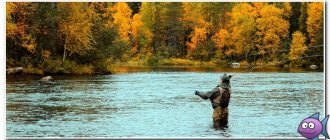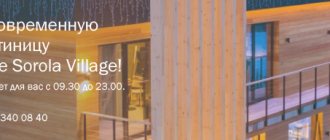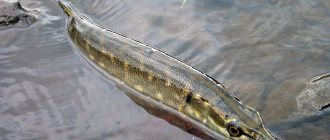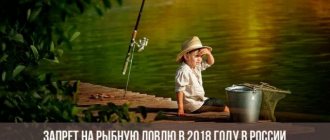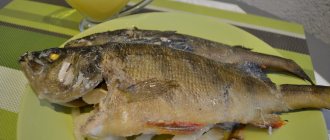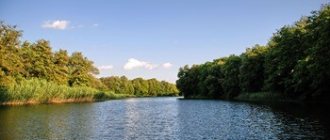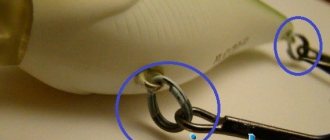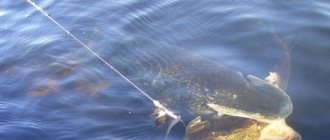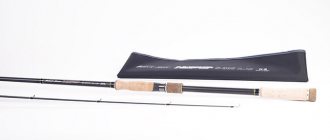Having visited Karelia at least once, a person is drawn to look again at those beauties and abundance of places untouched by man. Due to the fact that some regions are not affected by human activity, the state fully supports the development of eco-tourism.
Karelia is characterized by the presence of comfortable modern hotel complexes. Therefore, if you go there as a tourist, you should not be afraid that you will have to live in wild conditions. Although fishermen are attracted precisely by wild or semi-wild places for wild fishing in Karelia. Karelia has a mild climate, but getting into periods of prolonged rain is not a problem, even in summer. Tourists who prefer to relax away from civilization can stay in tents on the banks of rivers and lakes, of which there are countless in Karelia.
Most local entrepreneurs offer tourists their recreation centers where they can spend the night with a certain level of comfort. During the daytime, it is possible to go fishing by going on boats closer to promising places, using the services of a guide.
Water trip Kovda - Chupa. Day 1. Art. Kovda, lake Seryak, Kovda River
Choosing a lake for fishing
The number of lakes in Karelia reaches 60 thousand, so choosing a suitable lake for fishing is not an easy task.
Such large freshwater lakes as Ladoga, Onega, Vygozero, Topozero, Segozero, Pyaozero and others are equipped with access to the shores. Fishing bases have been built on the shores of these lakes, where there are convenient places to launch a boat.
Fans of wild, unprepared fishing choose lakes where no one has ever been before. As a rule, there is no access to such lakes, and you can only get to them on foot along difficult routes. Despite the difficulties associated with the transition, where there may be swamps or mountainous terrain on the way, fishing will certainly delight you with a significant catch. The choice of lake also depends on what kind of fish predominates in specific lakes.
Those who like to catch perch, pike, bream and other species will find the southern lakes of Karelia suitable. For those who like to catch salmon species, you will have to go to the northern lakes and rivers, where many species of salmon are found.
How trout behave before spawning
Initially, let us remind you when trout go to spawn – November or December. In cold rivers, swimming may begin in October. Before a long swim, trout gather in schools of various sizes, then begin swimming, usually against the current. Upon reaching a suitable place for spawning, mating games begin, where the males have to win the attention of the female and the opportunity to mate with her.
Females are demanding in their choice of males, preferring strong and mature individuals. Young males are often rejected and not allowed near them. Females understand that strong fish can produce healthy offspring that are more likely to survive.
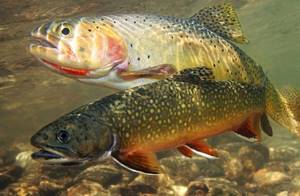
After creating a pair, preparation of the places where it is planned to lay the eggs begins. Trout are demanding when it comes to creating nests; it takes a lot of effort to create a suitable place. It is important that the nest is protected from predators and from currents. If an egg is carried away by a current of water, it is doomed to be eaten by any small predator.
Read more
What is a fishing spider?
The best places for fishing in Karelia
Ladoga lake

This is one of the largest lakes in Karelia. The lake is home to roach, bream, pike, pike perch, burbot, whitefish, salmon and trout. People go to this lake mainly to fish for salmon and trout, despite the fact that Lake Ladoga is home to at least 50 species of different fish. Naturally, for effective fishing it is better to have a boat. This is due to the fact that coastal fishing is rarely practiced here due to the lack of fishing conditions. Here, fish are caught in straits or bays located between numerous islands and the coast.
Walleye are common on the south side of the lake. Closer to the northern coast, salmon are mainly found, which spawn in the Svir, Burnaya and Vidlitsa rivers. Sterlet, sturgeon and burbot are also found here.
Lake Onega

It is somewhat smaller than Lake Ladoga, but is famous for the presence of salmon fish species. At the same time, salmon are protected here and fishing is possible only with special sports licenses. Salmon spawn here, in rivers such as Shuya, Kumsa, Vodla and Pyalsa. Here you can find salmon weighing from 5 to 7 kg. Despite this, in addition to salmon, other, more well-known species of fish are caught, such as bream, pike perch, pike, perch, etc.
Syamozero
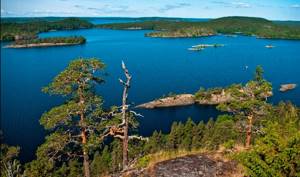
This lake is located in the north of Karelia, in the Shuya River basin. On the lake you can find up to 80 islands, as well as a large number of bays and bays. In the lake, whitefish, grayling, vendace, roach, perch, ide, chub, pike perch, silver bream, etc. are found in large quantities. Perch is distributed throughout the lake, and there are specimens weighing more than 1 kg. Pike and pike perch are constantly fighting for territory where there is a lot of food.
Pyaozero
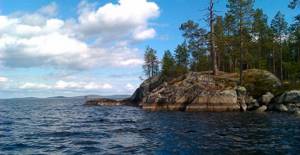
This lake is located closer to the north of Karelia and is considered the largest lake in the north of Karelia, with a maximum depth of up to 50 meters. The average depth of the reservoir is 16 meters.
There are not many species of fish in this lake, but here you can find trophy specimens of brown trout (10-12 kg) and ide. In total, there are up to 16 species of different fish living in Lake Pyaozero.
For those who prefer to “hunt” for grayling, we can recommend Topozero. There is a lot of it here, especially individuals weighing 1 kg. In addition to grayling, this lake contains the same fish as Pyaozero, since they are part of the Kum reservoir.
Fishing in Karelia
Trout spawning process
After preparing the site, the spawning process begins. The female lays eggs in the resulting hole, the male approaches the clutch and fertilizes the eggs. The minimum spawning period for trout is 1 week, but usually up to 2 weeks.
A medium-sized female is capable of laying 500-2000 eggs; this is a relatively small amount; many river fish lay tens of thousands of eggs. About a quarter to a third of the eggs are usually placed in one clutch. Trout caviar is the size of an allspice and is green, yellow or red in color.
After spawning and fertilization, the female tries to cover the nest as quickly as possible, covering it with stones. The eggs are quite sticky, but they are still carried away by the current without an additional surface layer. The stickiness of the eggs disappears as the fry gets older.
What do people take for fishing in Karelia?
A fishing trip to Karelia should be planned very carefully. In order not to forget anything, it is better to make all notes on paper. In this case, the totality of things depends on how comfortable you plan to relax.

If you plan to spend a vacation away from civilization, then you need the maximum necessary. For example:
- You must have a car . It is desirable that this be an SUV, with which you can get as far as possible, to more remote bodies of water. It wouldn't hurt to have a boat that would have to be towed on a special trailer.
- Availability of a boat with or without a motor . It is unlikely that you will be able to fish from the shore without problems on wild lakes. Moreover, if the lake is large, then you need to get to the fishing spots. In such conditions, a boat or boat designed for long journeys would not be a bad idea. If fishing is carried out on a small river or lake, then an ordinary rubber boat or PVC boat without a motor will be sufficient.
- Be sure to have high-quality tackle, lures and bait. Spare parts for them will also come in handy, especially if there are captured specimens on this body of water. As a rule, they stock up on gear designed for various methods of fishing.
- A mandatory component is a tent and sleeping gear. In case of a full-fledged wild holiday, you will need a serious, waterproof tent. Alternatively, you can take air mattresses with you, or stock up on cots.
- An equally important component is a set of warm underwear and warm clothes , expecting that clothes and underwear will have to be changed. Protective clothing against wind and rain would also be a good idea. And since the nights can be cold, you need to rely on warm jackets and hats. We should not forget about shoes that could protect our feet from moisture and cold.
- You will need kitchen accessories that allow you to cook food over a fire: pots, plates, forks, spoons, knives, pots, pans, etc.
- You can't do without food . At the same time, you should take plenty of food with you, especially potatoes, salt, sugar, bread, etc.
- Personal hygiene items will also come in handy , as well as a first aid kit with cold medications and first aid materials.
- Accessories for creating comfortable living conditions, such as flashlights, matches, candles, watches, an axe, as well as chemical means of protection against blood-sucking insects such as mosquitoes and midges.
- In conclusion, you need to take with you all the necessary documents that give you the right to carry out this type of vacation.
Features of wild fishing in Karelia
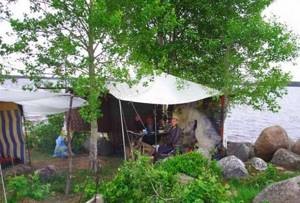
There are so many lakes and rivers in Karelia that it is not possible to visit every body of water. And yet, if you come fishing, it is advisable to plan your route very carefully. It is necessary to take into account the fact that around large lakes there are fishing houses or entire bases. In such places there are a large number of tourists who also want to go fishing. In this regard, there is a large concentration of fishermen in certain areas of the reservoir. To ensure that most fishermen do not disturb you, you can contact a guide who probably has knowledge about fishing spots that are located at a considerable distance from the rest areas.
When going to Karelia for the first time, it is better to consult with friends who already have similar experience or go with them. Most roads located at a considerable distance from civilization are unpaved, so you will have to rely on the all-terrain characteristics of your vehicle. We should not forget about warm and waterproof clothing, even in summer. Here in Karelia the weather changes very often and you can seriously regret it later.
The main problem of Karelia is the presence of a huge number of mosquitoes and midges, especially in wild fishing conditions. You will have to defend yourself from them both day and night. As already mentioned, it is advisable to have a boat, which can make the fishing process easier.
Fishing and hunting in Karelia-3
When do rainbow trout spawn?
The time of year greatly influences trout spawning. Both species (brook trout, or trout, and rainbow, or mykiss) lay eggs strictly in certain months. For the rainbow subspecies, the breeding season is spring. Depending on the region, spawning can begin either in March or by the end of May. It is necessary that the water temperature is within 6-7 degrees Celsius. As soon as the required indicator is reached, the fish begins to reproduce.
It should be noted that rainbow trout spawn a little later than brook trout, at 3-4 years of age. Males reach sexual maturity by 3 years, females a year later.
Recommendations for fishing in Karelia
When going fishing in Karelia, you should know that of the poisonous snakes, only vipers are found here. They pose no great danger to humans if they are not disturbed. Mosquitoes and midges are especially annoying here, so the presence of protective equipment is mandatory. In addition to midges and mosquitoes, there are also ticks, which you need to be afraid of and conduct regular body inspections for their presence. If a tick bites, the person should be immediately sent to the hospital.
Considering the fact that wild places predominate in Karelia, it will not be difficult to get lost here. In this regard, it is advisable to have a navigator with you.
The climate in Karelia is such that you need to be prepared for any change in weather conditions.
Some salmon species require a license to fish for, which should be considered before you go. To preserve fish, it is better to salt it. Some species of flora and fauna are listed in the Red Book.
The main advice is not to leave behind any kind of garbage, so as not to disturb the pristine beauty of this region.
